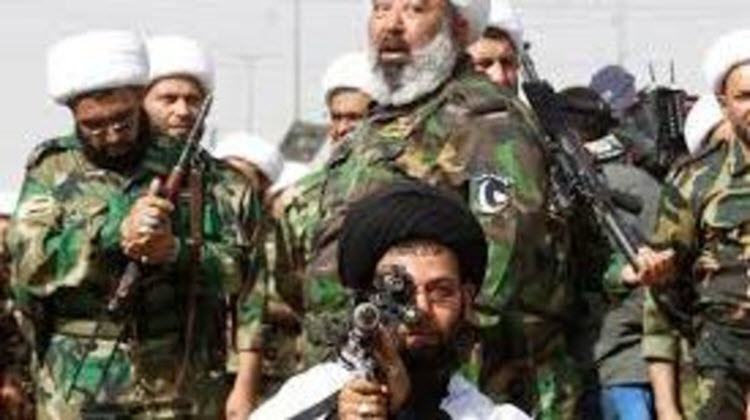
Yaroslav Trofimov wrote an article for the Wall Street Journal warning that, if Iranian allies establish a land corridor from Tehran to Beirut, Sunni Arab countries may face a potentially more dangerous challenge. He explains that as repugnant as the Islamic State is, Iran provides a “silver lining” since the “extremist group’s firewall blocks territorial contiguity between Iran and its Arab proxies in Syria and Lebanon”.
He adds: “This means that now, as Islamic State is losing more and more land to Iranian allies, these Sunni countries—particularly Saudi Arabia—face a potentially more dangerous challenge: a land corridor from Tehran to Beirut that would reinforce a more capable and no less implacable enemy.”
Pro-Iranian Shiite militias (Lebanon’s Hezbollah and Iraq’s Badr and Asaib Ahl al-Haq and so on) are “filling the void left by Islamic State in Syria and Iraq”. They are also better trained and equipped than the Sunni extremist group.
On top of this, they are also just as hostile to the Saudi regime. They have talked about dismantling the kingdom and freeing Islam’s holy places from the House of Saud. Following the break-up of diplomatic ties between Riyadh and Tehran this rhetoric has done nothing but intensify.
Western officials (who have not been attacked) see these Shiite militias as a “preferable alternative” to Islamic State’s murderous rule. In fact, some of the groups operating in Iraq coordinate with U.S. air power. However, Riyadh and other Gulf capitals are not of the same opinion.
Prince Turki al-Faisal, the former head of Saudi intelligence and a nephew of the current king, says that the abuses committed by Iranian proxies in Sunni areas are just as bad as those of Islamic State. He said: “They are equally threatening, and one feeds off the other … Both of them are equally vicious, equally treacherous, and equally destructive”. He also said that the West has completely misunderstood the Iranian regimes intentions in the region. “It’s wishful thinking that, if we try to embrace them, they may tango with us. That’s an illusion.”
This worry is not new – Jordan’s King Abdullah expressed his fear after the invasion of Iraq in 2003 which saw pro-Iranian politicians come to power in Baghdad. Following this there was a large U.S. military presence in Iraq and Sunni insurgency “kept Iranian power in check”.
Then, explains Trofimov, the Syrian civil war unleashed the upheaval of the Arab Spring. He said: “The dramatic rise of Islamic State that followed created a Britain-sized Sunni statelet in Syria and Iraq—and severed all land communications in the middle of that ‘Shiite crescent’”.
Andrew Tabler, a fellow at the Washington Institute for Near East Policy, said: “Iran’s power has spread further afield than before in terms of direct military power. We have never had so many Shiite militias operating in so many different areas, and fighting in traditional Sunni strongholds.”
There is a possibility that Iranian proxies and allies would join forces along the Iraq-Syrian border now that the Islamic State is under attack by U.S. airstrikes, Kurdish forces and a Turkish offensive. Trofimov questions “whether they would be able to hold that land and rule over the remaining Sunni populations without a degree of power-sharing—something that neither Baghdad nor Damascus seem ready for”.
If not, Trofimov believes that a new insurgency would “bubble up soon in those areas”. It is possible that this could be initiated by Sunni Arab states who seek to break up the region’s “Shiite crescent” once again.
Saleh al-Mutlaq, a leading Sunni Iraqi politician and the country’s former deputy prime minister, said that keeping the Sunnis disenfranchised would lead to this outcome. He said: “Unless you start thinking about the conditions that created ISIS in the first place and try to overcome these conditions, there will be a new ISIS again, maybe of a different kind.”







